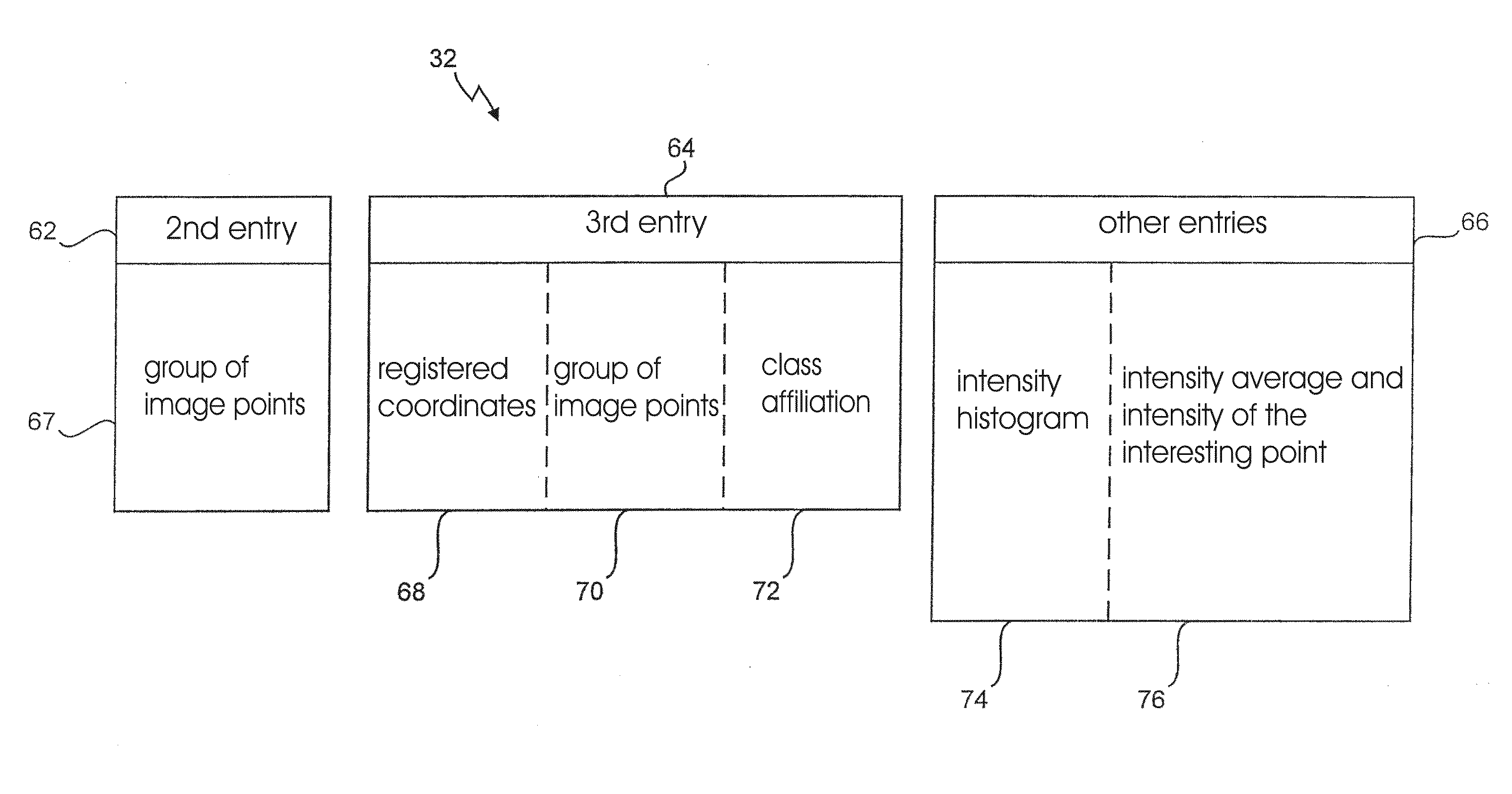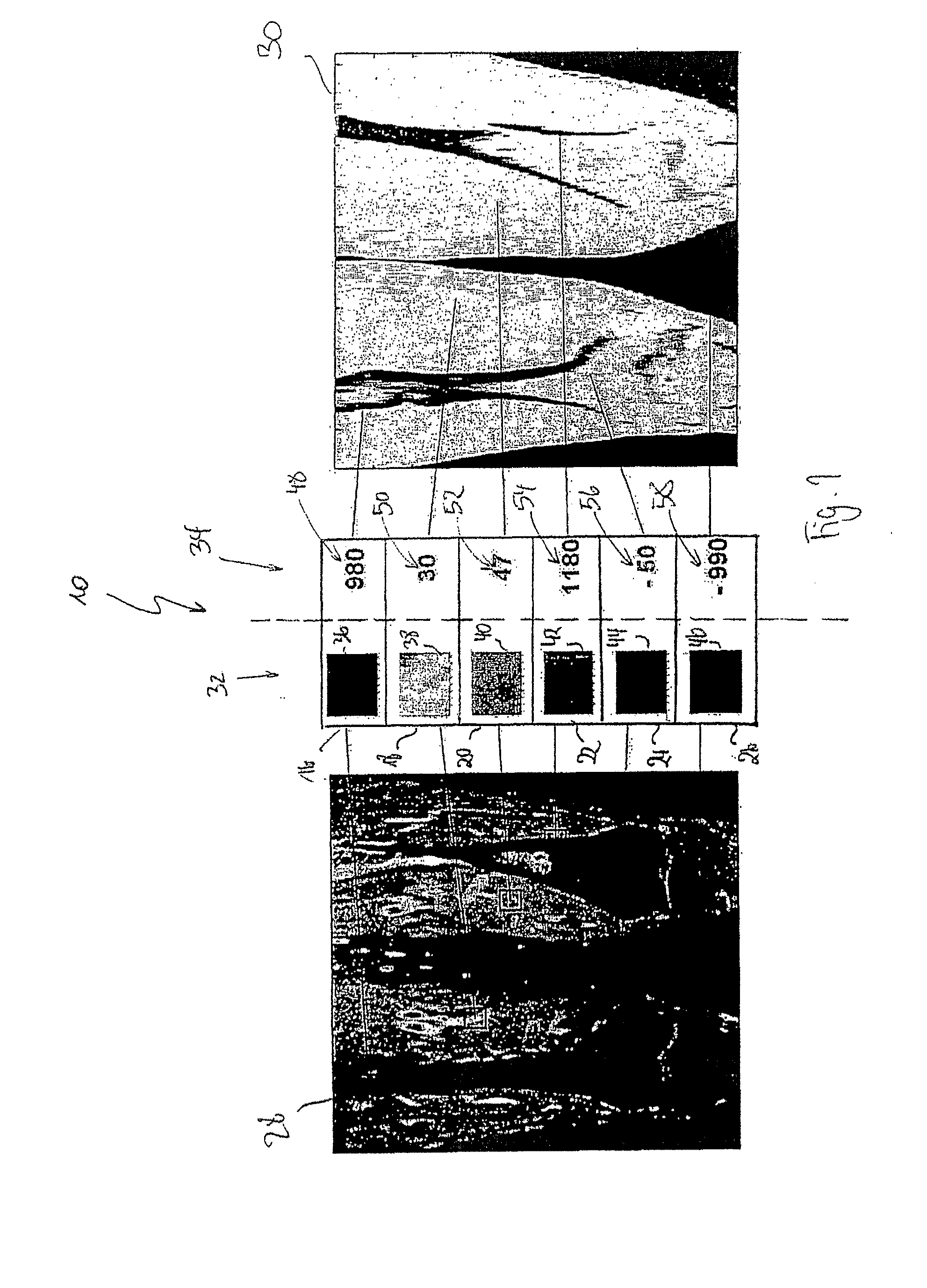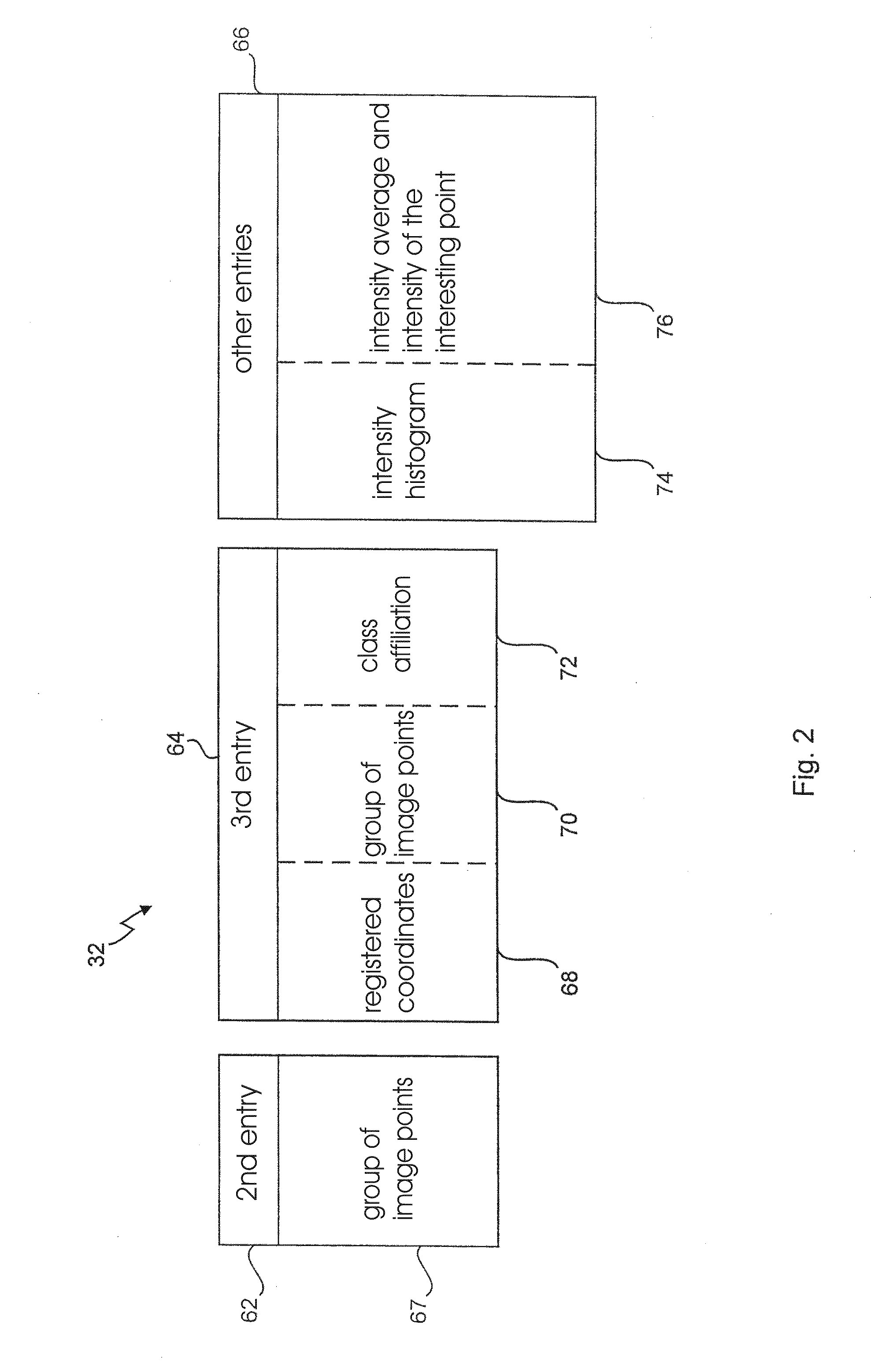Method for determining a property map of an object, particularly of a living being, based on at least a first image, particularly a magnetic resonance image
a technology of property map and image, applied in the field of magnetic resonance image, can solve the problems of ct image, skin burns, cell mutation or similar, radiation exposure of the organism examined, and the functional component of the atlas, particularly if formed by ct image, and achieve the effect of extending the error region of the mr imag
- Summary
- Abstract
- Description
- Claims
- Application Information
AI Technical Summary
Benefits of technology
Problems solved by technology
Method used
Image
Examples
Embodiment Construction
[0085]The method is used, for example, in processing medical images for determining an attenuation map in order to correct a PET image of a living being based on an MR image. Two recording effects of the PET image, i.e. attenuation as well as scattering of gamma radiation occurring during positron / electron annihilation, are to be corrected in a quantitative manner at least partially by means of the method.
[0086]Generally, the method of the invention is used for determining a property map of an object. Alternatively, probabilities for the property value can also be calculated for each interesting point besides a property value, namely for all points. With the method of the invention machine-learning methods are used for learning first—in a pointwise manner—for different image points of an image an assignment between a property value (output) and different information (input), i.e. an assignment rule is learnt from the input to the output. At a later time, the learnt assignment is app...
PUM
 Login to View More
Login to View More Abstract
Description
Claims
Application Information
 Login to View More
Login to View More - R&D
- Intellectual Property
- Life Sciences
- Materials
- Tech Scout
- Unparalleled Data Quality
- Higher Quality Content
- 60% Fewer Hallucinations
Browse by: Latest US Patents, China's latest patents, Technical Efficacy Thesaurus, Application Domain, Technology Topic, Popular Technical Reports.
© 2025 PatSnap. All rights reserved.Legal|Privacy policy|Modern Slavery Act Transparency Statement|Sitemap|About US| Contact US: help@patsnap.com



